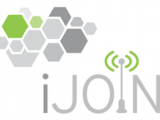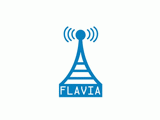Research
A list of recent selected publications of the Wireless Networking Lab members is provided below as well as the main projects in which the lab is involved. The lab projects include three running projects funded by the European Union in the area of wireless networks (FLAVIA, CROWD and iJOIN), one of which (iJOIN) is coordinated by Albert Banchs.
Publications (selected)
- P. Serrano, A. Garcia-Saavedra, G. Bianchi, A. Banchs, A. Azcorra, "Per-Frame Energy Consumption in 802.11 Devices and Its Implication on Modeling and Design," IEEE/ACM Transactions on Networking, to appear.
- J. Widmer, A. Capalbo, A. Fernandez Anta, A. Banchs, "Efficient Interlayer Network Codes for Fair Layered Multicast Streaming," IEEE/ACM Transactions on Networking, to appear.
- A. Banchs, A. de la Oliva, L. Eznarriaga, D. R. Kowalski, P. Serrano, "Performance Analysis and Algorithm Selection for Reliable Multicast in IEEE 802.11aa Wireless LAN," IEEE Transactions on Vehicular Technology, to appear.
- C. Vlachou, A. Banchs, J, Herzen, P. Thiran, "Analyzing and Boosting the Performance of Power-Line Communication Networks," ACM CoNEXT 2014, accepted.
- C. Vlachou, A. Banchs, J. Herzen, P. Thiran, "On the MAC for Power-Line Communications: Modeling Assumptions and Performance Tradeoffs," IEEE ICNP 2014, North Carlina, USA, October 2014.
- P. Salvador, V. Mancuso, P. Serrano, F. Gringoli, A. Banchs, "VoIPiggy: Analysis and Implementation of a Mechanism to Boost Capacity in IEEE 802.11 WLANs Carrying VoIP traffic," IEEE Transactions on Mobile Computing, vol. 13, no. 7, July 2014.
- V. Sciancalepore, V. Mancuso, A. Banchs, S. Zaks, A. Capone , "Interference Coordination Strategies for Content Update Dissemination in LTE-A," IEEE INFOCOM 2014, Toronto, Canada, April 2014.
- A. Banchs, A. Garcia-Saavedra, P. Serrano, J. Widmer, "A Game Theoretic Approach to Distributed Opportunistic Scheduling," IEEE/ACM Transactions on Networking, vol. 21, no. 5, October 2013.
- A. Garcia-Saavedra, P. Serrano, A. Banchs, G. Bianchi, "Energy consumption anatomy of 802.11 devices and its implication on modeling and design," ACM CoNEXT 2012, Nice, France, December 2013.
- P. Patras, A. Banchs, P. Serrano, "A Control Theoretic Scheme for Efficient Video Transmission over IEEE 802.11e EDCA WLANs," ACM Transactions on Multimedia Computing, Communications and Applications, vol. 8, no. 3, July 2012.
- A. Garcia-Saavedra, A. Banchs, P. Serrano, J. Widmer, "Distributed Opportunistic Scheduling: A Control Theoretic Approach," IEEE INFOCOM 2012, Orlando, FL, March 2012.
- P. Salvador, F. Gringoli, V. Mancuso, P. Serrano, A. Mannocci, A. Banchs, "VoIPiggy: Implementation and evaluation of a mechanism to boost voice capacity in 802.11 WLANs," IEEE INFOCOM 2012 Mini-Conference, Orlando, FL, March 2012.
- J. Widmer, A. Capalbo, A. Fernandez Anta, A. Banchs, "Rate allocation for layered multicast streaming with inter-layer network coding," IEEE INFOCOM 2012 Mini-Conference, Orlando, FL, March 2012.
- P. Patras, A. Banchs, P. Serrano, A. Azcorra, "A Control-Theoretic Approach to Distributed Optimal Configuration of 802.11 WLANs," IEEE Transactions on Mobile Computing, vol. 10, no. 6, June 2011.
- A. Banchs, P. Serrano, L. Vollero, "Providing Service Guarantees in 802.11e EDCA WLANs with Legacy Stations," IEEE Transactions on Mobile Computing, vol. 9, no. 8, August 2010.
- P. Serrano, A. Banchs, P. Patras, A. Azcorra, "Optimal Configuration of 802.11e EDCA for Real-Time and Data Traffic," IEEE Transactions on Vehicular Technology, vol. 59, no. 5, June 2010.
- M. Portoles, A. Cabellos, J. Mangues, A. Banchs, J. Domingo, "Impact of transient CSMA/CA access delays on Active Bandwidth Measurements", ACM Internet Measurement Conference (IMC), Chicago, IL, November 2009.
- R. Cuevas, M. Uruena, A. Banchs, "Routing Fairness in Chord: Analysis and Enhancement", IEEE INFOCOM 2009, Rio de Janeiro, Brasil, April 2009.
Projects

iJOIN
The last decades brought an exponential increase in mobile traffic volume. This will continue and a 1000-fold increase by 2020 has been forecasted. Small-cells promise to provide the required data rates through an increased spatial utilisation of the spectrum. Due to strong inter-cell interference, small-cell deployments will require a high degree of coordination as offered by centralised processing. Furthermore, heterogeneous backhaul solutions will be used to connect small-cells and core network. So far, access and backhaul are individually designed and therefore not optimised. In order to support centralised processing and a heterogeneous backhaul, challenges on access and backhaul must be simultaneously tackled. iJOIN introduces the novel concept RAN-as-a-Service (RANaaS), where RAN functionality is flexibly centralized through an open IT platform based on a cloud infrastructure..
- Funding: European Commission FP7-317941 (STREP)
- Duration: Nov. 2012 – Apr. 2015

CROWD
Wireless traffic demand is currently growing exponentially. This growing demand can only be satisfied by increasing the density of points of access and combining different wireless technologies. Mobile network operators have already started to push for denser, heterogeneous deployments; however, current technology needs to steer towards efficiency, to avoid unsustainable energy consumption and network performance implosion due to interference. While some efforts have already been devoted to evolving the technology, these efforts mostly take a restricted PHY perspective and do not consider higher-layer mechanisms, which are required to fully optimise global performance. In this context, CROWD promotes a paradigm shift in the future Internet architecture towards global network cooperation, dynamic network functionality configuration and fine, on demand, capacity tuning.
- Funding: European Commission FP7-318115 (STREP)
- Duration: Jan. 2013 – June 2015

FLAVIA
Wireless networks importance for the Future Internet is raising at a fast pace as mobile devices increasingly become its entry point. However, today’s wireless networks are unable to rapidly adapt to evolving contexts and service needs due to their rigid architectural design. We believe that the wireless Internet’s ability to keep up with innovation directly stems from its reliance on the traditional layer-based Internet abstraction. Especially, the Link Layer interface appears way too abstracted from the actual wireless access and coordination needs. FLAVIA fosters a paradigm shift towards the Future Wireless Internet: from pre-designed link services to programmable link processors. The key concept is to expose flexible programmable interfaces enabling service customization and performance optimization through software-based exploitation of low-level operations and control primitives.
- Funding: European Commission FP7-257263 (STREP)
- Duration: July 2010 – June 2013

CARMEN
CARMEN, CARrier grade MEsh Networks, will study and specify a wireless mesh network supporting carrier grade triple-play services for mobile/fixed network operators. Future operator networks will be comprised of a common core network and several access networks, and the CARMEN access network will complement other access technologies by providing a low cost and fast deployment mesh network access technology. The project proposes the integration of heterogeneous wireless technologies in a multi-hop fashion to provide scalable and efficient ubiquitous quad-play carrier services. To address the integration complexity of heterogeneous radio technologies, CARMEN introduces a layer 2.5 located between the subnet layer and the routing layer, in order to abstract technology specific issues into a common set of events and commands.
- Funding: European Commission FP7-214994 (STREP)
- Duration: Jan. 2008 – Dec. 2010